What's New
Displaying results 3471 - 3480 of 4911
Resource | Videos,
Video of the presentation by By Mr. J.V.R. Prasada Rao United Nations Secretary-General’s Special Envoy for AIDS in Asia and the Pacific, at the 7th IAS Conference on HIV Pathogenesis, Treatment and Prevention
Resource | Videos,
Tracking the HIV/AIDS Epidemic in Asia and the Pacific from AIDS Data Hub on Vimeo.
7th IAS Conference on HIV Pathogenesis, Treatment and Prevention
By Mr. J.V.R. Prasada Rao United Nations Secretary-General’s Special Envoy for AIDS in Asia and the Pacific
3 July 2013 Kuala Lumpur, Malaysia
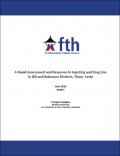
Resource | Publications,
This study was based on the Rapid Assessment and Response methodology outlined in the WHO Rapid Assessment and Response Guide on Psychoactive Substance Use and Sexual Risk Behaviour and the WHO Rapid Assessment and Response Technical Guide on Injecting and Drug Use. Both qualitative and quantitative research methods were used. 17 Key informant interviews, 15 focus group discussions, and 44 individual structured interviews among drug users were conducted.
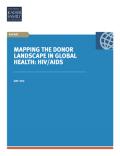
Resource | Publications,
The donor landscape for HIV/AIDS is varied and complex, with multiple donors providing assistance to many different regions and countries, and an average of 10 donors providing aid for HIV per recipient country. Despite the high number of donors in this space, however, the actual amount of funding provided for HIV/AIDS is concentrated among a small number of donors, with just two – the United States and the Global Fund to Fight AIDS, Tuberculosis and Malaria (Global Fund) – accounting for 80% of funding.
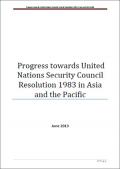
Resource | Publications,
The United Nations Security Council (UNSC) Resolution 1983 was adopted in June 2011 just before the United Nations (UN) General Assembly High Level Meeting (HLM) agreed the Political Declaration: Intensifying Our Efforts To Eliminate HI and AIDS including ten global targets to achieve by 2015 ("HLM targets").
Together, the HLM targets and UNSC Resolution 1983 provide an opportunity to scale up universal access to HIV and AIDS related services for all uniformed service personnel and their family members and for people living with HIV and the key populations at higher risk of HIV with whom uniformed services personnel interact. In Asia and the Pacific, key populations include sex workers, men who have sex with men, people who inject drugs, transgender people, migrants and mobile populations, prisoners, internally and externally displaced people due to humanitarian situations and those at risk of sexual violence.

Resource | Publications,
This publication reports on the progress being made in the global scale-up in the use of antiretroviral (ARV) medicines in low- and middle-income countries, the challenges that are being overcome or that await solutions and the opportunities for building on the achievements of the past decade.
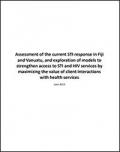
Resource | Publications,
Sexually transmitted infections (STIs) are present at high levels in the Pacific, with many countries having Chlamydia rates of >20% among antenatal clinic (ANC) clients. The current assessment examined the STI interventions implemented in Fiji and Vanuatu.
Both Fiji and Vanuatu would benefit from the increased use of STI (not just HIV) messages in their health communication and HIV prevention efforts. There is also a need to strengthen targeted interventions for HIV and STIs among the key populations at higher risk (KPHR) such as better linkages between civil society peer and outreach and government services, addressing laws that impede access by HPHR and strengthen condom programming. Fiji in particular could make greater use of its NGOs to strengthen targeted interventions for HIV and STIs among key populations at higher risk. Finally, the STI response should be monitored more intensively, including efforts to quantitate the success of partner treatment and syphilis screening efforts.

Resource | Fact Sheets,
In June 2013, there were 431 new HIV Ab sero-positive individuals confirmed by the STD/AIDS Cooperative Central Laboratory (SACCL) and reported to the HIV and AIDS Registry (Table 1). This is 46% higher compared to the same period last year (n=295 in 2012) and the highest number of cases reported in a month.
Most of the cases (95%) were males. The median age was 27 years (age range: 4-61 years). The 20-29 year (57%) age group had the most number of cases.
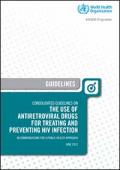
Resource | Guidelines,
These consolidated guidelines provide guidance on the diagnosis of human immunodeficiency virus (HIV) infection, the care of people living with HIV and the use of antiretroviral (ARV) drugs for treating and preventing HIV infection. They are structured along the continuum of HIV testing, care and treatment. Behavioural, structural and biomedical interventions that do not involve the use of ARV drugs are not covered in these guidelines.
The 2013 consolidation process combines and harmonizes recommendations from a range of WHO guidelines and other documents, including the following 2010 guidelines on using antiretroviral therapy (ART) for HIV infection in adults and adolescents, in infants and children and for treating pregnant women living with HIV and preventing HIV infection in infants. Comprehensive guidance is now provided on using ARV drugs across age groups and populations of adults, pregnant and breastfeeding women, adolescents, children and key populations. The guidelines also aim to consolidate and update clinical, service delivery and programmatic guidance.






